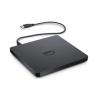
Published on 2016-12-15
The French Agricultural Drone
Drones that are specifically designed for farmers are also in existence. One such drone has been poised as the most advanced agricultural drone and has significantly enabled French farmers to boost their crop yields by a whopping 10%. This particular drone works by capturing crop data using Parrots ground breaking technology. It has a weight of 1.1kg with a 3 km link radio range being equipped with a trademarked Sequioa camera.
This Sequioa camera has been made with a fully-integrated and highly precise multispectral sensor to capture data across four non-visible bands. The camera also has the ability to produce visible RGB imagery for just one flight session.
You could be able to cover hundreds of acres, up to 10X more ground compared to the quadcopter drones. At just a height of 120m you could get to cover 200 ha. This drone has the ability to generate precise index maps to create high quality prescriptions that may allow farmers to carefully optimize their crops and increase their production quality, boost their yields besides cutting down on the overall costs.
Using drones for mapping, inspecting and monitoring
The combination of quadcopter drones with different cameras is aiding professionals in all the fields. What is more is that you can combine 3 different types of imagery in one flight to achieve advanced situational awareness. You could also come up with geo-referenced maps and models.
It is good to mention that search and rescue drones are also on the rise. The Swiss have been particularly at the forefront in the use of SAR technology. This might be explained by the fact that Switzerland responds to 1000 background SAR rescues annually, which sums up to about 10,000 manpower hours.
So what is special about the Swiss SAR Drone?
This drone makes use of an algorithm software that is able to:
- Learn and mimic the human brain through the use of Artificial Intelligence.
- It can process and recall visual disturbances.
- It could pick signs of both official and man-made paths.
- Able to recognize beaten dirt as well as softened grass.
- It is has the capacity to digest 20,000 images of trails in the Alps.
- An 85% accuracy in identifying trails which is about 3% higher than what humans could do while on foot.
Besides this major development, the Swiss are still working on a design of a drone that will be able to distinguish human features in images, alert responders on an individual’s precise location during search missions, describe the conditions particular individuals are in and undertaking all the search in cases of emergencies with humans coming in for the completion of the rescue mission.
COMMENTS
No customer comments for the moment.